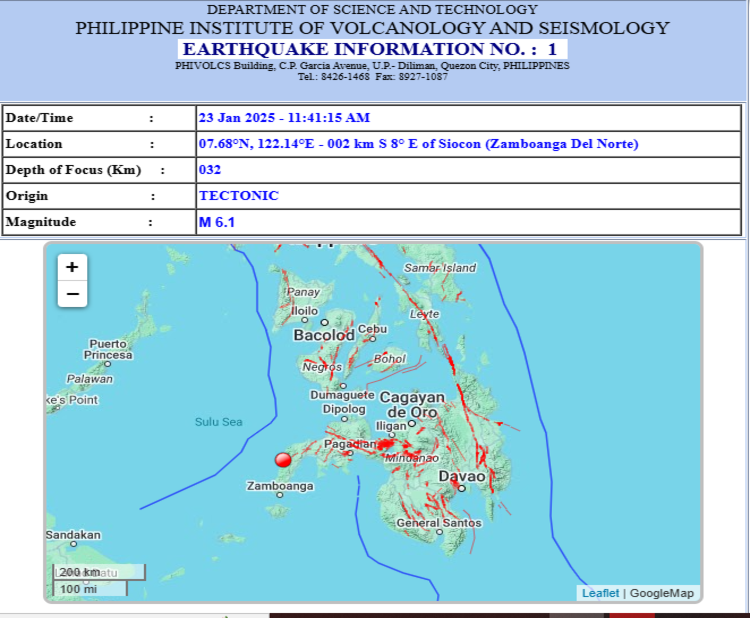A powerful magnitude 6.1 earthquake shook the municipality of Siocon, Zamboanga del Norte, today, January 23, 2025. According to the Philippine Institute of Volcanology and Seismology (Phivolcs), the quake occurred at 11:41 AM local time. Its epicenter was pinpointed at 07.68°N latitude and 122.14°E longitude, approximately 2 kilometers south-southeast of Siocon. The tremor originated at a depth of 32 kilometers and was classified as tectonic.

Phivolcs has raised alerts for possible damage and aftershocks in the affected areas. Residents have been urged to remain alert and follow safety measures. Detailed reports on casualties and the extent of damage are currently pending as authorities continue their assessments.
The earthquake highlights the Philippines’ susceptibility to seismic activity, as it lies along the Pacific Ring of Fire—a zone notorious for frequent earthquakes and volcanic eruptions. In recent months, the region has experienced significant tectonic activity. On October 27, 2024, a magnitude 4.1 earthquake struck Zamboanga del Norte, near Siayan town. Earlier today, a magnitude 5.8 quake hit Southern Leyte, causing structural damage to buildings and roads.
Phivolcs is closely monitoring seismic activity and reminds the public to prioritize preparedness. The agency has released guidelines to help communities reduce the risks associated with earthquakes, emphasizing the importance of securing heavy furniture, preparing emergency kits, and practicing evacuation drills.
Authorities are also encouraging residents of Zamboanga del Norte and nearby provinces to inspect their homes and infrastructure for potential damage. Structural engineers and local officials are expected to conduct thorough evaluations in the coming days to ensure safety.
The recent series of tremors underscores the critical need for disaster readiness in earthquake-prone areas. Strengthening building codes, investing in resilient infrastructure, and fostering public awareness are key measures in mitigating the impact of such natural disasters.
As aftershocks remain a possibility, residents are advised to stay updated through official channels, including Phivolcs and local disaster management offices. These proactive steps are essential in ensuring the safety and resilience of communities in the face of future seismic events.
